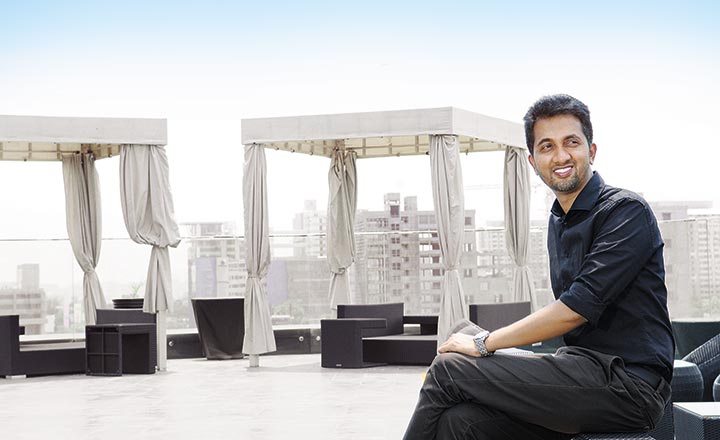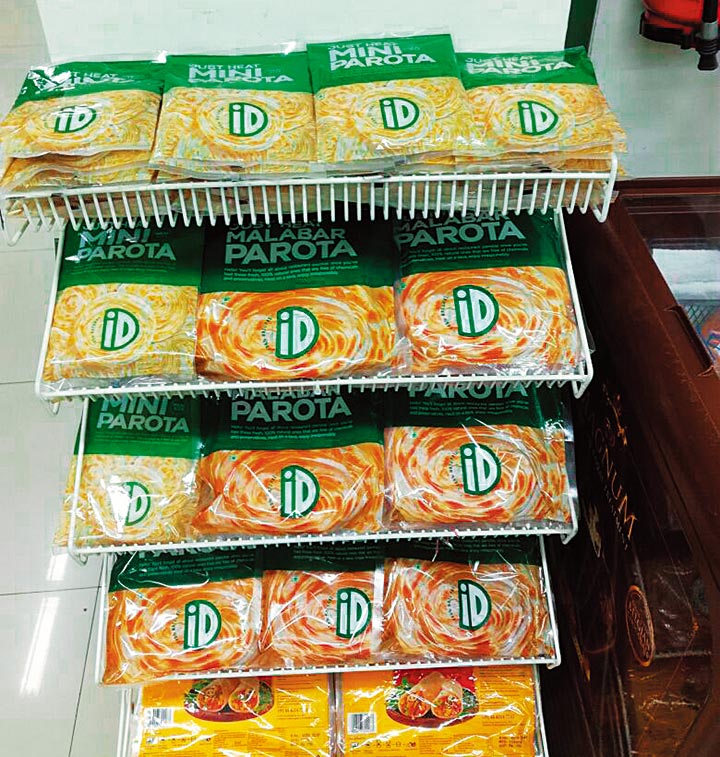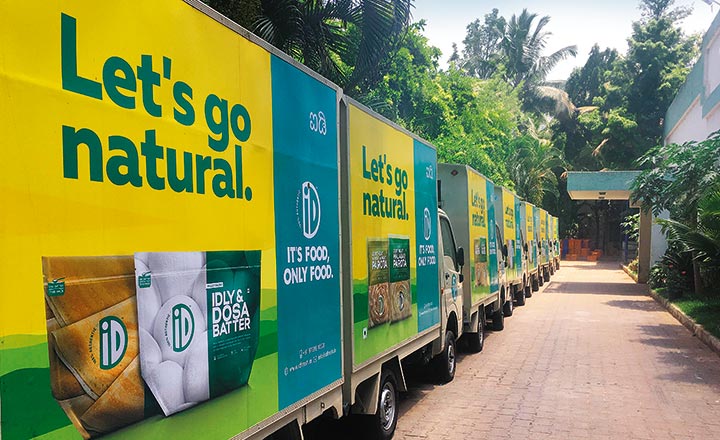It’s something Unilever was salivating over for a long time but hasn’t managed to get a bite of even now. 44-year-old PC Musthafa however grabbed the biggest white space in the foods industry with his centre of plate offerings like chapati, parota and batter for idli and dosa. Through his company iD Fresh Food, he has managed to build a solid food brand in categories with greatest potential to convert from unorganised to organised packaged foods — something every food company is today envious of. It is a result of not just smelling the “food” at the right time, but having the creativity to market it the right way and even more, embracing technology to scale the operation efficiently.
That iD’s products are natural, fresh and free of preservatives, and come in user-friendly packaging, is adequate reason for customers to love iD, but its success as a budding food company stems from the consistency in quality it has been able to achieve in a segment that has little or no precedence of industrial production
“People don’t believe me when I tell them that some of my stores in Bengaluru sell more iD packets than Maggi in a day,” says Damodar Mall, CEO of Reliance Retail. That should be enough to send the founder of iD Fresh Food to cloud nine. But PC Musthafa, CEO of Bengaluru-based iD Fresh Food prefers to stay grounded.
“I strongly believe that supply creates demand,” smiles Musthafa. Today his ready to cook and eat food products company supplies fresh batter for a 1.4 million idlis — among other food products — not only to Indian households, but to the Gulf countries too.
In 2006, when Musthafa started selling idli and dosa batter, there was no sizeable organised market for batter. So he introduced batter in user-friendly packaging across retail shelves in India. He has now expanded his product portfolio to parotas and chapatis as well. While Musthafa’s supply-creates-demand theory seems logical, a bigger contributor to his success is his determination.
For Musthafa, the journey was no cakewalk. He was born in a daily wager’s family in the Wayanad district of Kerala and struggled his way up the socio-economic strata.
“I was born an entrepreneur,” says Musthafa who started his first venture at the age of 10. He would borrow money from his uncle for a sweet shop, where he would buy and sell chocolates. And a profitable business it was. He joined the National Institute of Technology, Calicut for an engineering course, and in 1995 started working for Motorola in Bengaluru. Later, he went on to work as an IT consultant for Citibank in Dubai.
In 2003, he decided to come back to work for Intel in Bengaluru. He explains why: “One, my parents were living in India. Second, after my engineering, I managed to get a good Graduate Aptitude Test in Engineering (GATE) score but I couldn’t pursue higher studies due to my financial situation. Lastly I was getting bored with IT and wanted to do something else.” In 2005, he finally got into the two-year executive MBA programme at IIM Bangalore.

While in Bengaluru, he spent his free time at the grocery store run by his cousins, where he noticed that the loosely packaged idli batter sold there were popular. Although, there were quality complaints, the sales didn’t take a hit.
Musthafa, against his father’s wishes, decided to sell homemade batter and deliver it to customers. “So I rented a 50 sq. ft. place in 2006 and started with two grinders, one mixer and one weighing machine,” he reminisces.
The initial experience was rough, when out of about 100 packets supplied across 20 stores, only 10 would be sold. “We had no background in food processing,” he recalls. They faced a couple of challenges. "Firstly, it took us around nine months to get the batter right and secondly, the batter was perishable,” Musthafa says. With time they managed to solve these problems. A daily store and item wise analysis helped them get the forecasted demand right, which automatically reduced the wastage from 1 to 1.5%, within a year.
“My cousin Nazer was a great support at that time and he is my partner today. People who tried our product started recommending it to their family and friends and we started getting popular through word of mouth [publicity],” he says.
From making Rs.20 lakh in the first year, by 2010 iD grew to Rs.10 crore as they scaled up to 1,000 stores in Bengaluru. In the past seven years, they have extended their presence to 13 new cities apart from Bengaluru and expanded their product portfolio to include products like parotas, paneer, curd and chutneys. With revenues upto Rs.150 crore in 2016-17, currently iD’s products are available in 20,000 stores across all the cities they are present in including Bengaluru.
Branding batter
So, what’s the secret of its success? iD’s success stems from building a reliable brand around products that are highly commoditised. Musthafa believes word of mouth worked wonders for them. “If the product is packaged right, and customers are serviced properly, that’s half the marketing done. It is the cheapest form of marketing or branding,” he adds.

“The philosophy of branding a commodity and presenting in a convenient transformative packaging for customer really worked for us.” Reliance Retail’s Mall agrees, “It is like what Amul and other dairy companies have done to dahi or butter. It’s not only the convenience but the consistency in quality that drives customers to stores to buy something which they can make at home.”
iD Fresh Food had to ensure their quality was maintained to turn into a worthy brand. State of the art manufacturing was therefore key. “Traditional grinders can grind 1.5 kgs of dal per hour. So about four years ago, to cater to our growing market we needed to upgrade our manufacturing capabilities,” says Musthafa. For the dosa and idli batter, they worked with a German manufacturer as no such technology was available in India. While Germans do not grind to make batter, they had industrial scale seed grinders which could be adopted in India. “We invested up to a crore and developed machines that can grind up to 1,500 kgs of dal per hour.” Their machines churn out 50,000 kgs of batter everyday.
They used a similar process for parotas as well. Today iD dishes out six lakh parotas and one-lakh chapatis per day. “We tried procuring a machine that would make laccha parathas but we didn’t get any. After some experimentation, we developed our own machine with the help of a fabricator,” he says. Musthafa realised how efficient adapting technology was proving to be, and hence over the past three years iD has spent around Rs.2 crore on technology, not just for machines but even on other aspects of business. “We have geofenced every store over the past two years. It has helped control the wastage and sales have improved,” says Musthafa. Geofencing is a software feature that helps to identify geographical boundaries using radio frequency identification (RFID) technology or global positioning system (GPS). This is used it to connect with their staff and customers. The technology helps iD track supplies, ensures it reaches on time and helps decision-making based on data generated by sales.
New products, new markets
Although idli-dosa batter may be iD Food’s largest revenue churner making up for 55% of their overall revenue, their focus has been on diversifying across products and markets. “We started selling paneer about seven months back. Our differentiator is that we manage to keep it natural by adding lemon to it,” shares Musthafa. The company is already selling 4,000 packets of paneer a day and has also launched curd. Currently parotas contribute about 30% to overall revenues, chapatis bring in about 6-7%, while dairy brings in the rest. “Today’s generation might buy iD products because of the convenience. But I want them to buy our products because they are natural,” Musthafa says.
Over the next five years, Musthafa’s aim is to become a Rs.1,000 crore company. iD Fresh Food is already testing waters in the US, UK and Singapore. The company hopes to tap into existing markets, add stock keeping units (SKUs) and new categories for new markets. This year, it will begin with Muscat and enter eight new cities in the Middle East in the coming six months. We are going to be introducing products like ragi batter, poha and dhokla mix. We are looking to expand in cities in the NCR region and Gujarat,” Musthafa shares. Bengaluru contributes 40% to overall revenues, Dubai follows with 20%, Mumbai and Hyderabad bring in 12% each while the other cities contribute the remaining 16%.
iD has five manufacturing units — two in Bengaluru, one each in Chennai, Mumbai and Hyderabad and one in the UAE. In March 2017, Premji Invest, the investment arm of the Indian tech billionaire Azim Premji, picked up an undisclosed stake of Rs.150 crore, with the option to invest an additional Rs.30 crore. This was the second round of funding, following the Rs.35 crore it raised from Helion Ventures in 2014. “Two things we are bullish about — one, that there is high demand for high quality packaged food, delivered through your grocery store. Second, ethnic food is becoming more and more popular with the consumers. But the compelling factor has been that iD has converted a staple food into brand,” says Rahul Garg, partner, Premji Invest. “We also underestimate the homogeneity of food in India. We assume that people in Chennai would not eat parota and people in Delhi would not eat idli. That’s not always the case.” With the money raised, iD Fresh Food is looking to set up five more factories, four in India and one in Dubai.
Growth bumps
While demand for products seems to be gaining momentum, there are still some challenges to be overcome. The most obvious challenge for the company is the last mile distribution. Apart from the large format retail chains, there aren’t too many retail stores that have 24x7 cold storage facilities and the retail infrastructure hasn’t quite kept up with the company’s fast paced growth. “In the first few years with Aditya Birla Retail, iD was growing at a moderate pace. But in the last couple of years, we are doing three times the volumes we used to do,” says Munawar Shaikh, head (frozen & dairy) at Aditya Birla Retail. According to him, the major challenge for iD is that its products are temperature-sensitive and need to be frozen, but currently in modern trade, chiller space is limited. So the company had to think out of the box to make products available across modern trade at all times and that’s what it did. “The temperature controlled shipper boxes specially designed by iD can be placed in convenience stores and will definitely help in improving their availability,” he says.
R Natrajan, chief operating officer at Ratan Tata’s investment vehicle RNT Capital who is a board member at iD Fresh Food has a realistic take on the whole thing. “Their biggest advantage is that the product is still natural, fresh and preservative free. In addition to distribution channels, another challenge will be maintaining quality standards as the company continue to add new products and enter new markets. But we are very confident that we can overcome these successfully,” he says.
As it scales, Garg feels there is definite need to create greater awareness about the brand. “Awareness is a challenge because we are creating the market. We are not competing with any brands. So the albatross of category creation is also on us. With modern trade, it is easier, but you have to ensure that the idea that products are as fresh as home-cooked food, must be ingrained in every customer’s mind. Since we are the first ones doing it, we hope to spend a lot of time on it,” he says. Two years back, the company started using both traditional and digital platforms to increase brand awareness. “We spent about Rs.8 crore last year and this year our advertising budget will be around Rs.25 crore,” says Musthafa.
“Large consumer growth, increasing demand for the ready to eat fresh food, unquestionable quality of the product and right pricing are what makes me bullish about iD,” says Natarajan. And Musthafa is very confident of reaching Rs.1,000 crore of revenues in the next five years. “We already have a first-mover advantage. If we are able to penetrate deeper and gain market share even in existing markets, we should reach our target,” he says. For now, the born entrepreneur does seem to be unstoppable.











